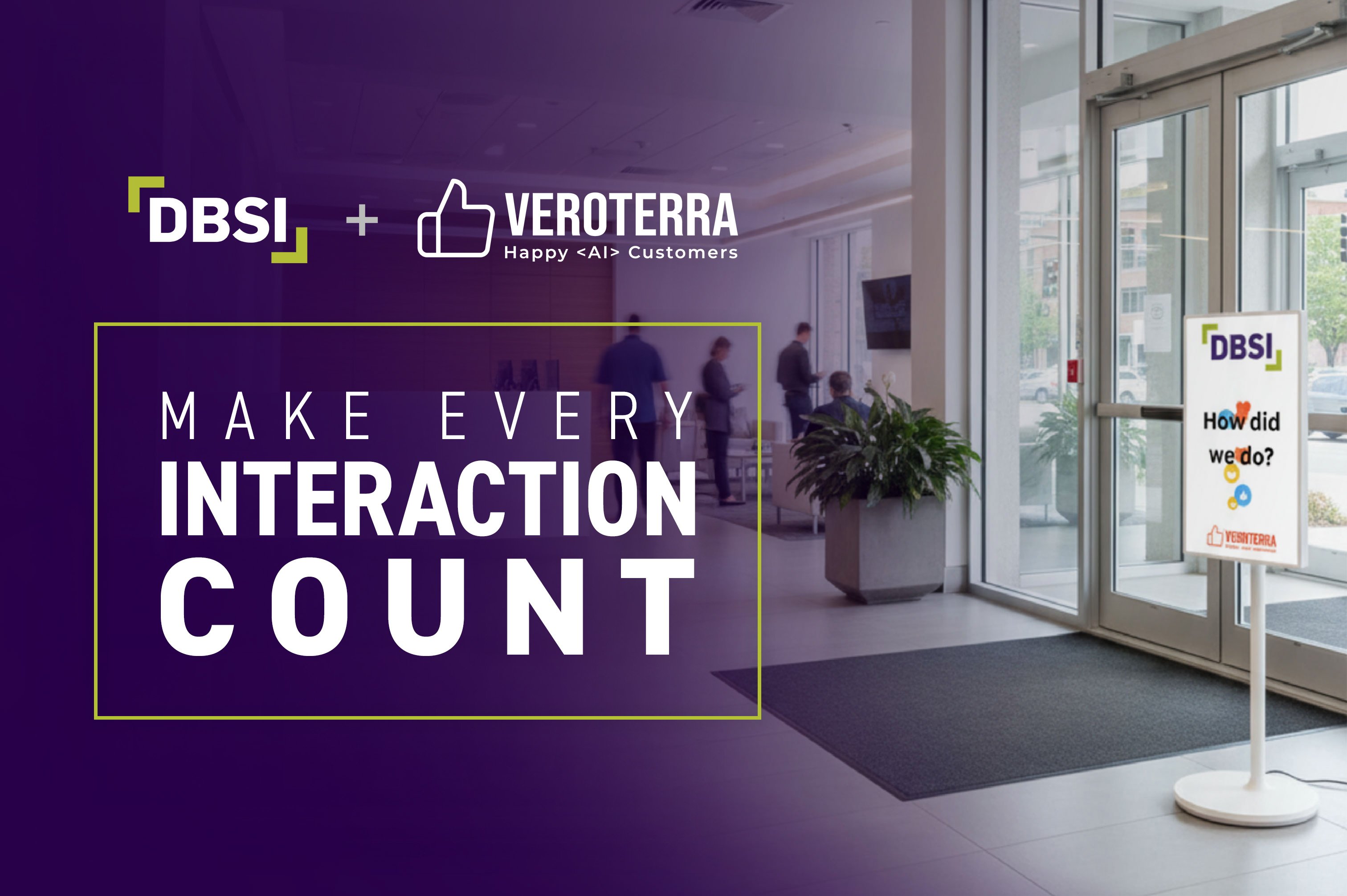4 min read
Design-Build for Financial Institutions, From Architecture and Construction to Interior Design and Technologies
Bruce Allen Eastwood : Nov 10, 2021

How can you tell if your branch is up to par?
Well besides using our free branch scorecard (which you can download here), a good way to tell if a transformation is needed is to see if you have any of these features in your branches:
- Teller lines and queue ropes that restrict client’s choice, increase perceived wait times, offers a transaction-focused environment, and forces cold handoffs when clients need advisory services.
- High-pressure, confining office spaces that make clients and staff feel like there is an awkward “selling” cloud above the
-
Outdated processes and technologies that are restricting efficient and retail-friendly interactions.
The modern retail branch has left these features in the dust and replaced them with better alternatives, like:
- Teller Towers are free of queue lines and offer a more inviting location for tellers to work with clients.
- Service Spots offer flexible, private workstations around the branch, for more advisory-level conversations—without the need to go into an office.
- Core-integrated technologies that allow for an open floorplan built around the Universal Associate Model.
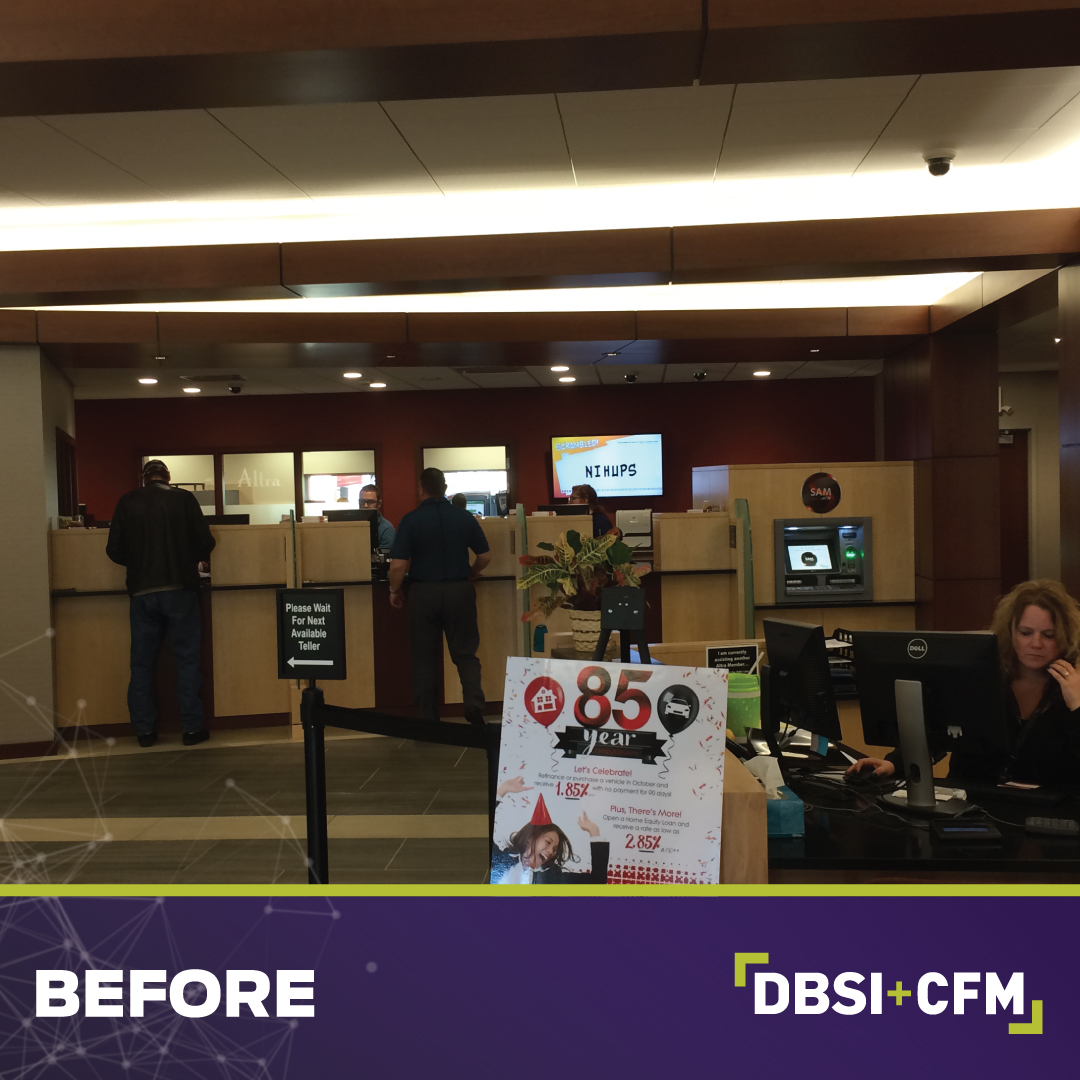 |
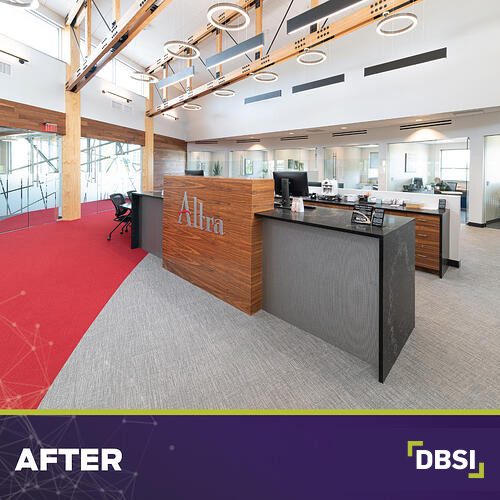 |
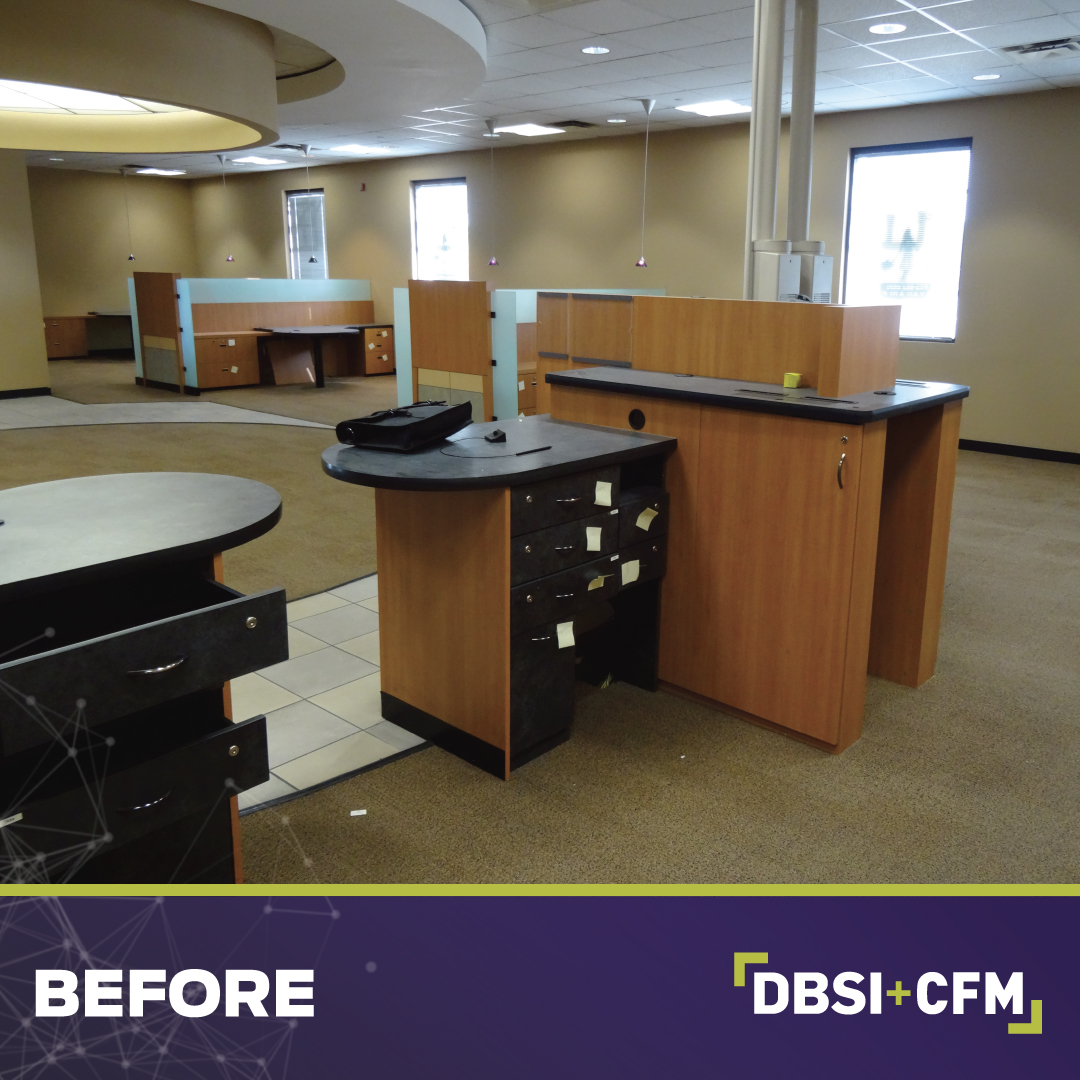 |
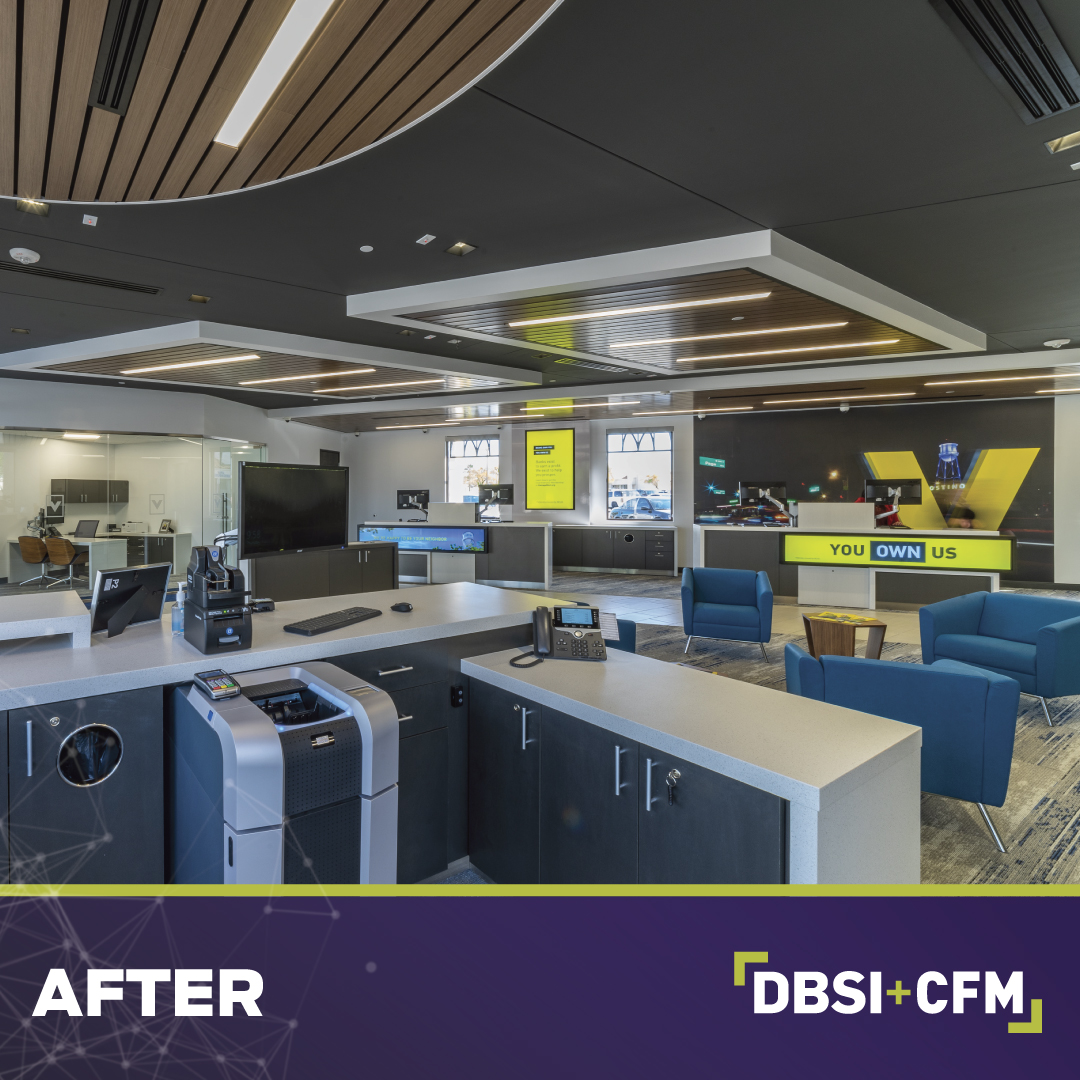 |
So, you know you need to change, but where do you start?
When getting ready to take the steps toward building or transforming a branch, there are a few things to consider. Things like: why you need the branch(es) in the first place, the role they play in your network, your goals for these branches, and how you will measure the success, your budget, your ideal timeline.
The most important of all, however, and the catalyst for your entire project, is deciding upon the delivery method you will use for transformation. The Construction Industry Institute (CII) defines two widely known and accepted delivery methods as follows:
Design-Bid-Build
This is the most traditional process in the U.S. construction industry, where the owner contracts separately with a designer and a contractor. The design firm is hired to deliver design documents and the owner or agent then solicits bids from contractors to perform the work. Designers and contractors bear no contractual obligation to one another, and the owner bears all risks associated with the completeness of the design documents.
Design-Build
Under this method, an owner typically hires a single entity (like DBSI) to perform both design and construction under a single contract. Portions, or all the design and construction, may be performed by the entity or subcontracted to other companies. This method includes high levels of collaboration between the design and construction disciplines, input from multiple trades into the design, and a single entity bearing project risk.
Choosing the right approach
When deciding which project delivery method is right for your branch project, you should consider:
- Capacity and technical capability to closely manage the process
- Individual project drivers
- Sensitivity to the cost and schedule escalations
- Degree of comfort with bearing project risk
Financial institutions who possess a strong desire to control the design and construction process and/or have the funds to hire sufficient personnel to closely manage the process of branch transformation may be more suited to the design-bid-build process, especially if they are willing to bear the risk that the design will be complete and include sufficient details for constructability and enough room for contingencies to absorb costly change orders.
On the other hand, research efforts indicate that projects completed with the design-build approach regularly outperform their design-bid-build counterparts in terms of cost and schedule performance, quality, reduced risk, change orders, and the ability to respond to real-time, evolving needs.
You probably think we’re biased, being a design-build firm and all... so we pulled some of those hard facts on why you may want to consider going with the design-build approach.
A Construction Industry Institute (CII) study of projects submitted by both owners and contractors stated, “Owner-submitted design-build projects outperformed design-bid-build projects in cost, schedule, changes, rework and practice use.” Practice use factors include constructability, team building, zero accident technique, design/information technology use, and change performance.
And in terms of schedule, another CII study indicated that “An experienced design-build team has the greatest opportunity of succeeding in achieving goals in schedule maintenance, construction speed, and intensity.”
Picking the right transformation partner
Nobody’s website is going to say, “we do a really bad job transforming branches” which means that you need to do your research before hiring a firm, whether that be a design-build firm or separate vendors for the design-bid-build approach.
We recommend starting with an interview, where you can get all the answers you need to pick the right partner. Some questions to consider asking:
- What kind of specialists will I have access to as a result of choosing this design-build firm?
- What is the firm’s history when it comes to keeping projects on schedule and on a budget? (Is there a reference list that I can call?)
- May I see a portfolio of past projects that are like the one I’m interested in doing?
- Is the firm licensed, insured, and well-versed in obtaining correct permits?
- How does the firm handle communication? Will there be a “point person” assigned to my project?
What to avoid and red flags to look for:
- If they can’t confidently answer your questions, that’s a bad sign.
- If they don’t have experience with financial institutions, you should not be working with them. It’s as simple as that. Your needs are unique, and your average local contractor isn’t going to know these nuances which are critical when both designing, and building, a bank or credit branch.
- We have seen many projects fail under a general, local contractor’s watch; we've even had to step in and fix a few projects before they reached catastrophic failure. Oftentimes, they find themselves severely over budget, blowing past deadlines, and end up with a project that simply isn’t going to work (if it is ever completed at all).
- If your potential partner is leaning on you and your leadership team to drive more than just the vision of the project, you should not be working with them. You are hiring an expert for a reason, so don’t let them make you do extra work that they should be doing.
- Don’t just pick the firm with the prettiest drawings. A design can look great in the drawings and their presentation may sound nice, but once the project starts you will start to notice the timeline slip further and further away from your original promised date, the set budget will quickly be depleted, and you will probably have to go back to the board to ask for more money and time.
What to have on your "wants" list:
- A partner of high caliber who can confidently answer your questions, and even back up their answers with examples of their work.
- A firm that specializes in both designing and building for banks and credit unions and who will know all the important details to deliver upon in order to offer excellent staff and client experience.
- A partner who can provide you with multiple references as well as have completed projects in communities around your branch locations.
- A partner with strong communication and project management skills to make your involvement in the project as simple and painless as possible.
Design-Build with DBSI
We’re not saying that every other firm is wrong for you, but we are saying that DBSI is the smart choice. Why? Because we take Design-Build to a new level with our simplified 6d process.
Learn more about this approach in this downloadable guide, 6d for Dummies! And no, we don't think you're a dummy... we just really love fun themes!

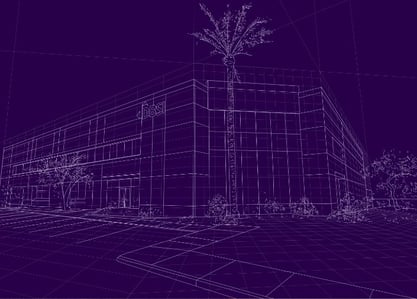












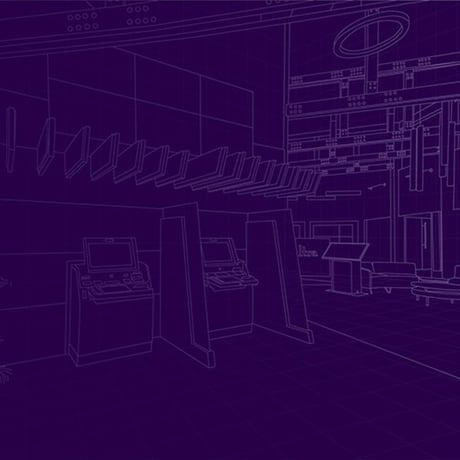
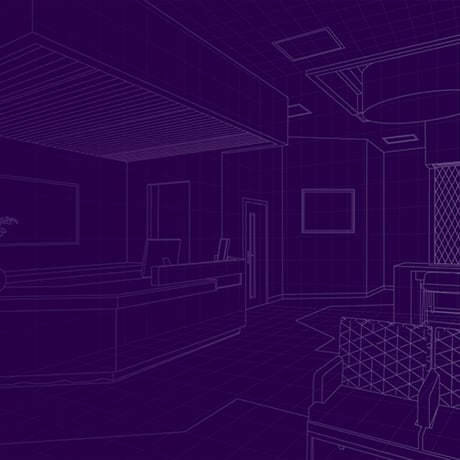

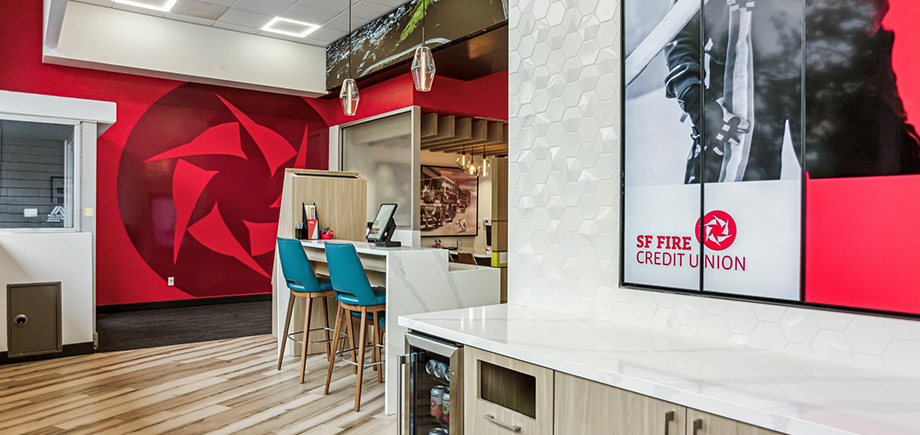
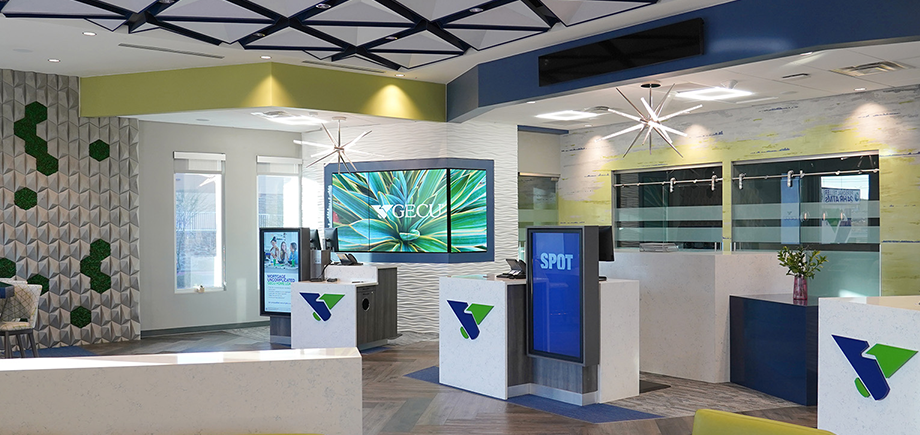





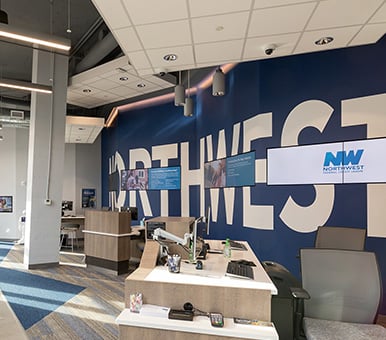
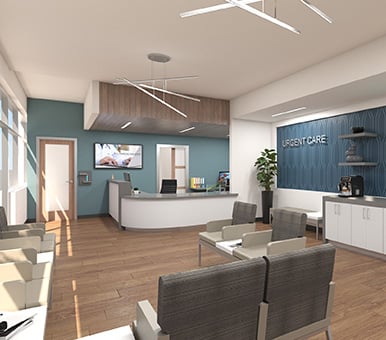









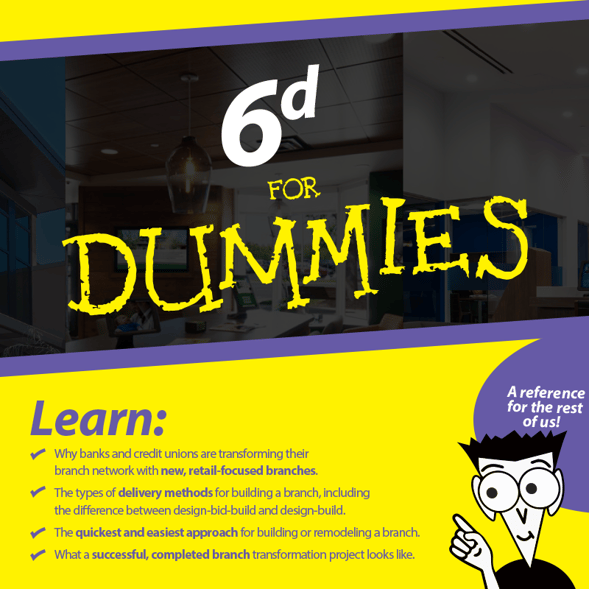
-1.png)
-4.png)
